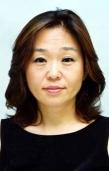My Experience as a Go Insei in Japan

I was an insei in Japan, at the Nihon Ki-in (the Japanese Go Association), between February 1994 and September 1995. I am sharing here some details about that experience.
I lived during all that period in a special insei dormitory: the "Igo Kenshu Center". Igo Kenshu Center is a 3-story building that can accommodate about 50 people. It was used both as a dormitory for insei from outside Tokyo, and as the venue for the official insei league games every weekend. Here is a link on google Maps - last time I checked, there was an apartment building in the place where Igo Kenshu Center used to be.
My sensei, Kobayashi Chizu

My sensei was Mrs. Kobayashi Chizu, professional 5 dan. I met her in 1992, when I was the Romanian representative to the World Amateur Go Championship - I told her about my dream to study Go in Japan, and she was able to make all the arrangements for me to start as an insei in 1994. She was so kind to help me with everything while I was an insei.
Mrs. Kobayashi Chizu helped several other non-Asian people to study Go as insei in Japan - she is very dedicated to the idea of forming the base of a professional Go organization in Europe.
An insei traditionally lives in his teacher's house - which became almost impossible nowadays in Tokyo, with the huge raise in real estate costs. The most famous such teacher in Japan was Kitani Minoru. Almost all famous Nihon Ki-in professional players who dominated the Japanese Go in the last quarter of the 20th century were his students: Otake Hideo, Cho Chikun, Kobayashi Koichi, Kato Masao, Ishida Yoshio, Takemiya Masaki, Kobayashi Satoru.
The sum of the Dan levels hold by all Kitani school's students is nowadays over 500! It is a tradition for a professional Go player in Japan to have his own students, in order to help others in the same way he was helped as a student. The total Dan of Kitani sensei's direct disciples is about 400, so the remainder comes from 'grandchild' disciples, including Kitani's actual granddaughter, Kobayashi Izumi, the daughter of Kobayashi Koichi.
My teacher has also been Kitani sensei's student, together with her 3 brothers who are also Go professionals currently.
The most famous of her brothers is Kobayashi Satoru: while I was insei I had the chance to see him winning the most important professional title in Japan, the Kisei.
Chizu sensei told me many times that, by being her student, I am indirectly a student of Kitani sensei and that this way I belong to the big "Kitani Go family". That made me very proud but also put a lot of pressure on me.
My sempai, Hans Pietsch

My "sempai" as a student of Chizu Sensei was Hans Pietsch, also an insei at that time. Hans had become Chizu Sensei's student a few years before I did, so he was much stronger than me (he used to stay almost always in A class, while my best record was to promote to the B class a couple of times, but I never managed to stay there). Actually I never defeated him in any of the countless training games we played. Two years after I quit being an insei, Hans became professional (1997), then quickly got promoted to 4 dan (2000).
Hans was killed by a robber on January 16th 2003, in Guatemala, while he was on an official Nihon Ki-in tour, promoting Go in Central America. I'll always remember him as a great Go player, Go teacher and friend. I put are a few of the games Hans commented for me.
Insei league
The insei league games were played every Sunday (and also on Saturdays, once a month). When I was insei there were 4 classes, A class being the strongest and D the weakest. There were 12 insei in each class from A to C and the rest of them in D class (usually more than 12). A tournament takes place monthly within each class: top 4 in each class will move up to the next class, while worst 4 will play next month in the lower class. When a new insei joins the league, he will get the lowest position in D class to start with, regardless of his strength. The time limits for these games depend on the class you play in: between 30 minutes and one hour for a game. However, the byoyomi was always the same, 1 minute per move. Asian insei didn't usually enter in byoyomi, at least in B to D classes I played in.
The D class insei were not so strong, maybe around European amateur 1-2 dan. C class insei were about the average-strength European amateur. B class insei were very strong for a European amateur.
I started as everybody else at the bottom of the D class, where I won all almost my games. Next month I played in C class, where I lost almost all my games. Due to some insei leaving the insei league, I got to stay in C class next month as well. I fell back to D finally, after the May tournament. In autumn I managed to get promoted up to B class. I never managed to stay in B class, each time I felt back to C. I did once fell again to D, but mainly I've gone back and forth between C and B classes. Next year, in 1995, I didn't manage to qualify for the "yoosen" (the pre-qualification tournament, top 5 of which would qualify for honsen) so I decided I would go back home and continue my university studies after 18 months as an insei.
"How can I lose to this uncle?"
Young insei are very tenacious and confident: they always play to win (they are never-say-die type). My teacher told me that when she was insei they used to play official games also against "outsiders" (that is non-insei people). When they would play against an amateur in his late 20s or early 30s, the insei used to say to themselves: "How can I lose against this "uncle" (oji-san in Japanese)?".
Life as an insei
During weekdays, when there are no league games, an insei would spent most of his time studying Go: replaying professional games, replaying his own games from the league, playing fast games with other insei. Asian insei of course go to the regular school in the morning, then they come back, do their homework and study Go. All Go related activities seem to be regarded by the Asian insei as a very nice break from the regular school's boring duties.
Wednesdays and Thursdays were the 2 days for official professional games at the Nihon Ki-in. Wednesday was for players from shodan to 4 dan, while Thursday was for 5 dan and up (by the way, starting from 5 dan a professional player enters the "top pro field", where for instance all game fees are much larger then for "low dan"). Many insei are counting byoyomi and recording games, some are just watching. When one does byoyomi or game recording he is supposed to sit in what Japanese call "seiza" position, that is on one's knees, sitting on his own legs. It is quite painful for somebody untrained, especially after the first 5 minutes or so...
I have never done byoyomi or game recording, but I used to go to Nihon Ki-in regularly on Thursdays to watch professional games. I have the conviction that one can get stronger at Go even by just watching professionals playing official games, by observing and understanding their attitude while playing Go.
Hikaru no Go
By the way, there is a Japanese manga called Hikaru no Go which describes pretty accurately the professional Go scene in Japan. In particular, it describes the insei league, and the Igo Kenshu Center where I lived myself as an insei in Japan. I highly recommend you read it (I didn't think I would ever read manga, but Hikaru no Go managed to change my perception about it). There is also an animated series based on the manga, which I liked a lot.

